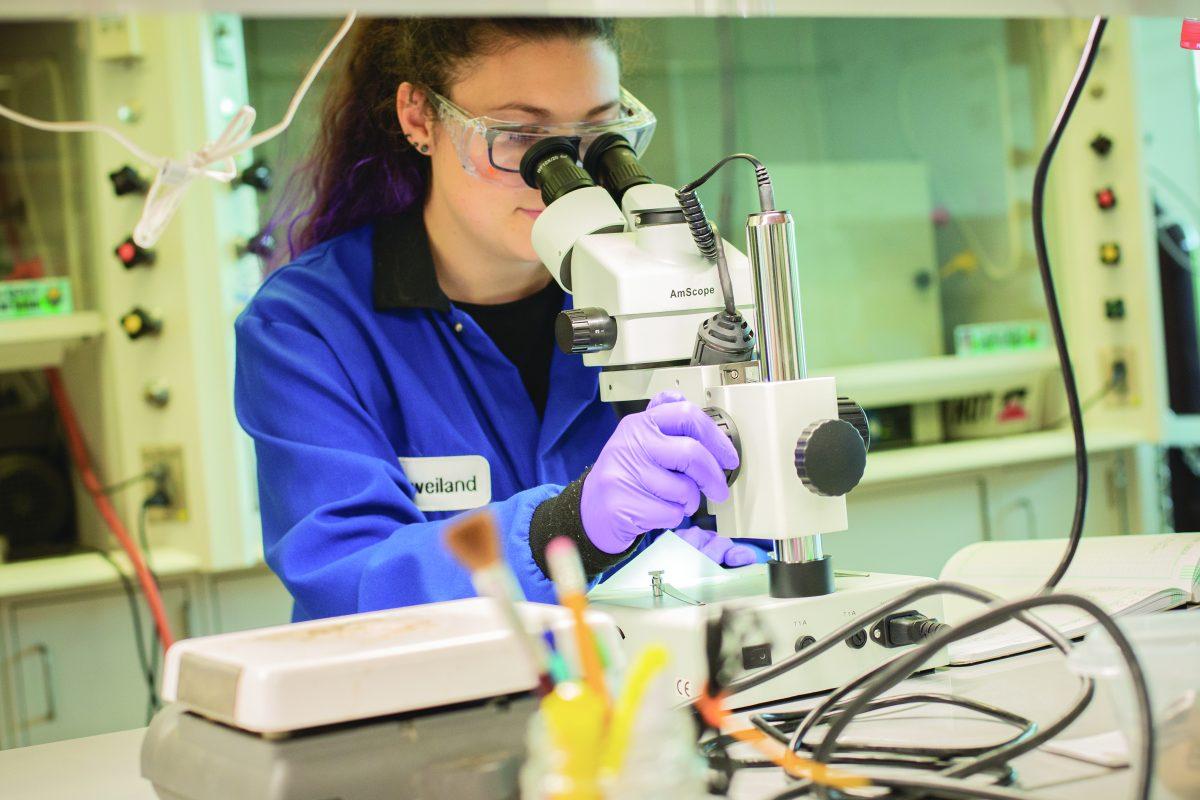Candidate earns position in federally funded program to study crystal growth in furnaces for first time in campus history
After finishing her second year of graduate school, one UTD student became the first in the school’s history to earn a position on the Department of Energy’s Office of Science Graduate Student Research Program.
Chemistry Ph.D student Ashley Weiland was one of 70 students from across the country to be awarded a three-month position at a national lab. Weiland will be conducting her research at the Argonne National Laboratory in Illinois.
The application, Weiland said, has three parts: merit, letters of recommendation and a written proposal. Part of the criteria for the written proposal, she said, is that the research must be something a candidate cannot complete at their university, only at a national lab.
Weiland currently works at Julia Chan’s Solid State Chemistry Lab. Chan is a chemistry professor and the principal investigator at the lab. The lab studies crystal growth and quantum materials, Weiland said.
“So what we do is we grow crystals,” Weiland said. “We take the raw metals … and then we combine them at really high temperatures in furnaces — it’s 4000 degrees Fahrenheit … to grow these crystals.”
Weiland said she will be using the synchrotron beam at Argonne to further the research she has done at Chan’s Lab.
“What we do is fundamental research,” Weiland said. “It’s figuring out underlying processes so that we can use that information to design materials… that will be technologically important.”
Weiland said she will be using the synchrotron at Argonne for in-situ high-intensity X-Ray diffraction.
“What (we’re) doing is we’re using a synchrotron beam … it’s kind of like a particle accelerator.” Weiland said. “It’s this giant circle, like football field size, and they take electrons and shoot them around the circle and you utilize the energy that’s coming off of these particles to do high intensity X-Ray diffraction.”
UTD currently offers X-Ray diffraction equipment for researchers on campus, but does not have in-situ X-Ray diffraction, Weiland said.
“In-situ means as a reaction is happening,” Chan said. “If you’re cooking something in the oven, you can take it out and take a peek … but you can’t do that at high temperatures.”
Weiland said the synchrotron will allow her to track crystal growth while the crystal is inside the furnace. The machine will allow her to track the electron density surrounding the atoms and, using calculations, deduce a molecular structure.
The things Weiland will learn at Argonne, Chan said, will help Chan’s lab design quantum materials.
“She’s an excellent student,” Chan said. “She just finished her second year as a graduate student. She already has several papers published; I think she has two and we’re about to submit two more. That’s unusual for a graduate student to be so far along.”





